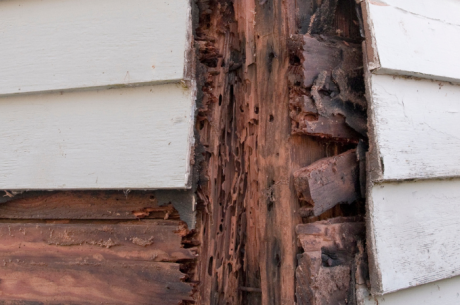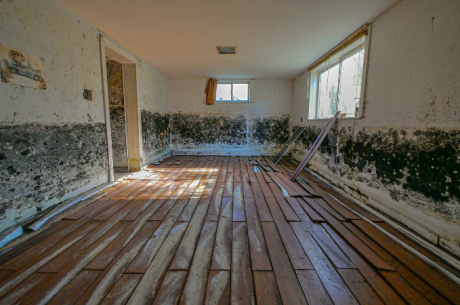Candles can provide a cozy and inviting atmosphere, filling your home with the sweet scents of your favorite fragrances. But did you know that a burning candle can also present hidden hazards? From burn injuries to property damage, there are many risks associated with using candles. But don’t worry, we’re here to help you learn how to safely enjoy all of those lovely aromas without putting yourself or your family at risk.
In this article, we’ll discuss the dangers associated with a burning candle, as well as best practices for safe candle use. We’ll cover topics like proper wick trimming, keeping an eye out for signs of problems, and easy-to-follow tips on how to reduce the risk of fire and smoke damage and other hazards. Let’s get started!
Types of Candles
First things first, when it comes to enjoying your favorite scents, there are several types of candles you can choose from, depending on your desired features and safety considerations.
- Pillar candles: These are tall, cylindrical candles that are freestanding and come in a variety of sizes. Pillar candles are commonly used for decorative purposes and can be crafted from various materials, such as wax and beeswax, to suit different preferences and styles.
- Votive candles: These are small candles that are placed in glass or metal containers. Votive candles are often used as accents or decorations and are typically unscented.
- Tea lights: These are small, usually unscented candles that are placed in a small metal or plastic cups. Tea lights are often used for their warm glow and can be used in a variety of decorative settings.
- Taper candles: These are long, thin candles that are usually placed in candle holders. Taper candles come in a variety of colors and are often used for formal events, such as weddings and dinners.
- Scented candles: You can find these candles in a wide variety of scents, ranging from floral and fruity to spicy and more. Scented candles can be made from various types of wax and can be used to add ambiance and fragrance to any room.
With all these choices available, you should be mindful of certain fire safety precautions before lighting up any type of candle. Otherwise, you might be putting yourself, your family, or your property at risk of fire.
Burning Candle Fire Prevention and Safety Tips
Now that you know the types of candles available, let’s talk about fire prevention and safety tips to ensure your candle experience is a safe one. When burning any type of candle, it’s important to practice good safety habits to avoid hazardous situations like accidental fires. Here are some tips to ensure your safety when using candles:
1. Trim the Wick
When a candle wick is too long, it can produce a larger flame that can cause the candle to burn hotter and more quickly, increasing the risk of a fire. By trimming the wick to 1/4 inch before lighting the candle, you can help prevent these risks.
2. Keep Candles Away from Flammable Materials
It’s essential to keep candles at least one foot away from any flammable materials, such as curtains, bedding, or paper. If the flame gets too close to any of these materials, it can quickly ignite a fire.
3. Use Sturdy Candle Holders
Always place your candles in sturdy holders that won’t tip over easily. The holder should be large enough to catch any wax drips and be made from a non-flammable material such as metal, glass, or ceramic.
4. Never Leave a Burning Candle Unattended
Leaving a lit candle unattended can be dangerous, even for a few moments. Make it a habit to extinguish the candle prior to leaving the room, and ensure that candles are placed in a location that is inaccessible to children and pets.
5. Keep Candles Out of Reach of Kids and Pets
Children and pets may not understand the dangers of fire and may accidentally cause a fire or burn themselves. Keep candles out of reach, and always supervise children and pets around lit candles.
6. Use Caution when Extinguishing Candles
To extinguish a candle, use a snuffer or a spoon to put out the flame. Blowing out a candle can cause sparks or hot wax to fly, increasing the risk of a fire.
Health Risks of Candle Smoke

Candle smoke can be hazardous to your health. Inhaling candle smoke or prolonged exposure to lighted candles can cause irritation, asthma attacks, and even lung cancer in some cases. It is important to understand the potential risks of using scented candles so that you can enjoy them responsibly and safely.
Here are three key things to remember regarding candle smoke health:
- Candle smoke contains volatile organic compounds (VOCs) which have been linked with respiratory problems such as coughing, wheezing, and chest tightness.
- Burning a candle without proper ventilation increases the risk of overexposure to VOCs and other toxins released by the flame.
- Scented candles often contain synthetic fragrances that release additional chemicals into the air when burned, including phthalates which may act as endocrine disruptors.
It’s crucial to take steps to protect yourself from these dangers. Keep windows open while using candles and place them away from drafts to ensure adequate ventilation. You should also avoid extended periods of candle use indoors; it’s best not to leave a lit candle unattended for too long. To further minimize any possible adverse effects on your health from candle smoke exposure, consider switching out scented candles for unscented versions or non-combustible alternatives like wax melts whenever possible.
Air Quality Considerations
When burning scented candles indoors, air quality should be a top priority. Candles can emit pollutants that can negatively affect the air quality inside your home. The combustion of wax and fragrance oils produces soot particles that are released into the air and accumulate on surfaces like furniture, walls, and ceiling fans. This accumulation of soot can reduce indoor air quality and increase the presence of VOCs in the home environment. Here are some air quality considerations to keep in mind:
– Choose natural candles: Some candles are made with synthetic fragrances that can release harmful chemicals when burned. Choose candles made with natural, non-toxic ingredients like soy, beeswax, or essential oils.
– Avoid paraffin wax candles: Paraffin wax is a byproduct of petroleum and can release harmful chemicals when burned. Look for candles made with soy, beeswax, or vegetable-based waxes instead.
– Burn candles in a well-ventilated area: Lighted candles in a well-ventilated area can help reduce the buildup of harmful chemicals in the air. You can simply open a window or use a fan to circulate fresh air.
– Consider an air purifier: If you burn candles frequently, consider using an air purifier to help remove any pollutants from the air.
– Be mindful of allergies and sensitivities: Fragrances can be a trigger for allergies and sensitivities, so be mindful of any reactions you or your family may have to certain scents.
Alternatives to Candles
Candles can be a source of great pleasure, but it’s important to consider the risks. That’s why there are so many alternatives for those who want to enjoy their favorite scents without jeopardizing their safety.
1. Diffusers
Essential oil diffusers are a popular alternative to candles. They use ultrasonic technology to disperse essential oils into the air, filling your home with natural fragrances. Plus, diffusers can also have health benefits such as improving mood and reducing stress.
2. Wax Warmers
Wax warmers use electric heating elements to melt scented wax without the need for a flame. They come in various designs and scents, making them a versatile and safe option.
3. Incense
For centuries, incense has been utilized to provide fragrance to homes and religious spaces. It’s an entirely natural and secure alternative that is available in a range of scents.
4. Potpourri
Potpourri is a delightful blend of dried flowers, herbs, and spices that can be arranged in bowls or sachets to infuse a room with a pleasant fragrance. It’s a natural and decorative option that doesn’t require heat or electricity.
5. Room Sprays
Room sprays offer a convenient and swift method to introduce delightful scents into a room. With a wide range of fragrances available, they can be easily sprayed as desired to instantly refresh any space.
Regardless of which option you choose, remember that proper ventilation is key when using these products indoors — it reduces the buildup of fragrances and other irritants that can have negative effects on air quality over time. With this quick guide in mind, take some time to explore the endless possibilities available today, chances are you’ll find one that fits your needs perfectly.
The Bottom Line
It’s crucial to emphasize that candles can pose risks if not handled with caution. Therefore, it’s essential to take necessary precautions and use candles safely and appropriately to appreciate their delightful fragrances without any hazards or risks fully.
In situations where you need help with burning candle hazards in Zephyrhills, don’t hesitate to contact PuroClean Zephyrhills. We have a team of experts that can help ensure your property’s safety from fire and smoke damage.




 PuroClean Certified Restoration Specialists
PuroClean Certified Restoration Specialists